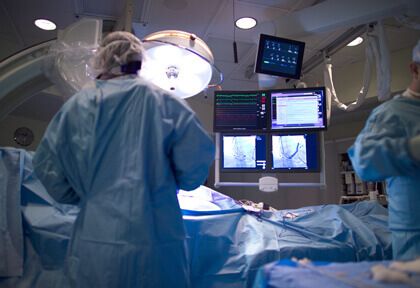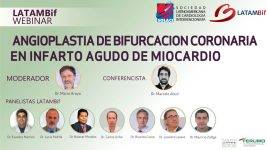Left main coronary artery percutaneous coronary intervention (LMCA PCI) is a treatment option that is increasingly used in our setting. One of the reasons for choosing this therapeutic strategy is the improvements in devices and techniques. However, the long-term results of LMCA PCI are not well established. The aim of this retrospective study was to…
What Is the Best Strategy for Moderately Complex Femoropopliteal Lesions?
At present, PCI is the preferred treatment for femoropopliteal lesions and drug coated balloons (DCB) have shown good performance. However, they have not yet been shown superior to bare-metal stents (BMS). This study compared randomized trials IN.PACT SFA I/II and IN.PACT JAPAN including 288 patients vs. the prospective Complete SE and DURABILITY II with 483…
Long-Term Evolution of Hybrid Coronary Revascularization
Currently, myocardial revascularization surgery (MRS) and percutaneous coronary intervention (PCI) are the available strategies for multivessel coronary artery disease. However, an alternative strategy has long been developed, called hybrid coronary revascularization (HCR), where the anterior descending artery is bypassed with a graft from the mammary artery and the rest of the lesions are treated by…
Non-ST Elevation MI: How Long Do We Have for A Coronary Angiography?
This summary discusses the early invasive strategy and the risk of mortality in non-ST-elevation AMI. Over the past 2 decades, mortality and complications rates have seen a significant reduction thanks to technological and pharmaceutical development, and the increasing experience of health teams. This is especially true when we look at the use of coronary angiography…
Left Main Coronary Artery PCI Using State-of-the-Art Zotarolimus-Eluting Stents
Percutaneous coronary intervention (PCI) to the left main coronary artery (LMCA) with drug-eluting stent implantation is currently a major challenge due to the size of the vessel, the compromise of a bifurcation lesion in important branches, and the potential risk of complications. Available information on LMCA PCI comes from studies where DES stents were implanted…
Long-Term Mortality in Non-Obstructive Lesions in the Left Main Coronary Artery
Left main coronary artery (LMCA) intervention with significant lesions on both coronary angiography and intravascular ultrasound (IVUS), either through angioplasty (PCI) or myocardial revascularization surgery (MRS), is directly related to a decrease in long-term adverse clinical events. However, the relationship between subclinical LMCA disease (preserved luminal diameters) and long-term mortality is still unknown. A retrospective…
TCT 2022 | Angioplasty vs. Surgery: The BEST Study Long-Term Results
The BEST study was a prospective, randomized study to compare percutaneous coronary intervention (PCI) with everolimus-eluting stents vs. myocardial revascularization surgery (MRS) in patients with multivessel disease. The analysis was interrupted early due to slow patient inclusion. The study included 880 patients, who were randomized 438 to the PCI arm and 442 to the MRS arm.…
TCT 2022 | FAME-3 Trial: post PCI FFR And IVUS in Patients with Three-Vessel Disease
We are well aware of the benefits of Fractional Flow Reserve (FFR) to assess coronary artery stenosis. FFR after PCI (post-PCI FFR) has been shown to have prognostic value; however, few studies have included patients with complex three-vessel disease. The impact of intravascular ultrasound (IVUS) or optical computer tomography (OCT) in this field has been…
Optimization by IVUS after FFR Guided PCI: Are There Clinical Benefits for Patients?
Percutaneous coronary interventions have improved during the last decade with 15% rate of target vessel failure (TVF) at 5 years according to the latest reports. We are already familiar with the benefits of functional assessment of lesions with FFR and its clinical outcomes. Additionally, low post PCI FFR values (FFR ≤ 0.83-≤0.91) have been associated…
Re-Watch Coronary Bifurcation Angioplasty in Acute Myocardial Infarction
You can now relive our virtual event on Coronary Bifurcation Angioplasty in Acute Myocardial Infarction. Coronary Bifurcation Angioplasty in Acute Myocardial Infarction








